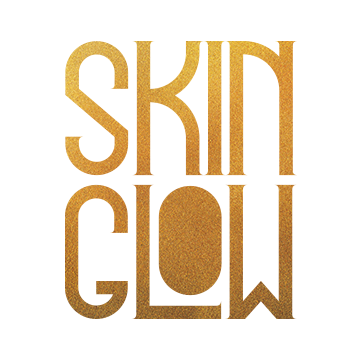Stretch marks can appear anywhere on the body, and they can vary in length and width, depending on the damaged area. Stretch marks are scars that develop during puberty or pregnancy, but several body treatments can diminish their appearance. To better understand what these scars mean, how to prevent them or what body treatments cures them, we have prepared a short guide that answers all of your questions.
Why stretch marks appear?
Commonly known as stretch marks, striae or stria distensae have a white, pink, red, brown, black, silver, purple or red color and are a form of scarring.
Our human skin is composed of two layers, epidermis and dermis. The first layer is serving as a barrier for infection, while the second one, the dermis (where these scars appear), is a connective tissue that provides elastic tissue and collagen.
Normally, such marks appear when the dermis is tearing apart during the rapid growth of the body. They usually occur during puberty when the body experiences rapid growth or during pregnancy, especially on the belly. In the third trimester of pregnancy, the belly will start growing much faster than in previous months, so if your skin is not that elastic, it will not support the weight gain.
Most common reasons
- Pregnancy;
- Puberty;
- Lose or gain weight very fast;
- Overweight and obesity;
- Having a family member that experienced stretch marks;
- Steroids that fastly grow muscles;
- Rapid muscle growth when going to the gym (without steroids);
- Hormonal fluctuations.

How stretch marks appear during pregnancy?
As previously mentioned, there is an unfortunate connection between pregnancy and stretch marks. During this beautiful period when you can not wait to welcome your baby to the world, some women gain more weght than others, and this varies from one body to another.
If you have concerns about this period, you should ask for your midwife’s or GP’s advice and maintain a healthy and well-balanced lifestyle.
Pregnancy scars begin to appear at the end of the second trimester and the third, not only on your stomach but also on the sides, hips, posterior, thighs, or even breasts.
As a woman, you might struggle with these scars—up to 90% of all mothers expecting a baby will end up getting them. When your baby gains up to 6-9 pounds at the end of your third trimester, it is almost impossible for your skin to stretch up that much without unwanted body scars.
Most of the time, these scars are pink, red, or brown, and they are caused because the dermis, also known as the supporting tissue of your skin, is pulled and tensed while expecting.
If your skin is elastic enough, you might not even experience these scars. However, if your mother had them, you will probably have to deal with the same problem.
Another aspect that is highly important during pregnancy is how fast you gained those extra pounds and how much you weighed before getting pregnant. The faster your skin stretches, unfortunately, it is more likely it will leave a mark.

Can stretch marks itch?
It all starts when you gain a lot of weight, even if we are talking about pregnancy, puberty growth, or obesity. New stretch marks have pink, red, or even a purple color, and they can be itchy.
Depending on your body growth, these scars can be both vertical and horizontal. Like any wound, healing creates itchiness caused by the second layer of your skin. The nerves respond to the healing procedure and give you that itchy sensation.
Red stretch marks versus white scars
Such scaring can have more than one color and will be treated according to that. They often appear as red or purple lines on your skin and transform into harmless white scars. It is very important to go under treatment while these still appear to be red because they are easier to mask and shrink.
Red marks caused by stretching skin, also known as striae rubra have this color in the beginning because your blood vessels are still visible under your skin. However, as long as these vessels are functioning, they will make your marks far more responsive to specialized treatment.
On the other hand, white stretch marks (striae alba) are older and not that easy to shrink or treat. In addition, as time passes, those vessels will narrow and it becomes so much harder to stimulate any collagen production.
Also, do not mistake red stretch marks with spider veins because they are not the same thing. Stretch marks are skin scars, while in varicose veins cases, the veins are affected, not the skin.

Which stretch marks go away, and which are permanent?
Red and purple stretch marks are easier to treat, while white lines require more effort if you want to make them less visible.
In terms of treatment, constant exfoliation can help you make them stand out less, and there are topical creams that might help. On the other hand, no research or study shows these home treatments actually work. If you want real improvement, you must see a specialist to help you reduce these unwanted stretch marks.
Types of treatments: Can you get rid of these scars?
- Microdermabrasion and hydradermabrasion are simple and painless procedures that can help you successfully make stretch marks appearance fade and even completely disappear. None of the two are invasive, and they proved to be effective as they exfoliate dead cells, hydrate the skin and provide an anti-aging effect. They improve circulation, therefore, boost lymphatic drainage.
- Chemical peels have the goal of removing dead skin cells and damaged layers and will stimulate skin regeneration.
- Microneedling is also a painless procedure that can help to reduce unwanted and prominent stretch marks. It acts on the root of the problem, the second layer of skin (dermis), and stimulates the collagen secretion, exactly where these scars appear. Extremely tiny needles are used for this procedure, and even if this might sound painful, it is not. It improves skin’s aspect, but you will need to book more than one appointment to get rid of them.
- Mesotherapy is also a non-invasive, on-spot under body treatment that provides all sorts of vitamins, minerals, and hyaluronic acid. Microinjections will be administrated in the affected area, improving the appearance of all sorts of scars. The vitamins will stimulate skin cells, causing them to produce more collagen and elastin.

Prevention:
Keeping your body hydrated, massaging, and rubbing stretch mark oils and creams may prevent stretch marks. Also, taking vitamins and living a healthy life will help your skin but these will not guarantee a life without stretch marks.
So many women and mothers fight with these scars every day, but before you worry about this problem, you need to know that they are very common, and some can be healed if treated in their early stages of development. However, some of these marks will never disappear; they might just end up looking less prominent.
If you are struggling with these unwanted scars, SkinGlow Clinic provides all specialized stretch mark removal treatments. To book an appointment, you can easily contact us by sending us a message, an email, or give us a call.





